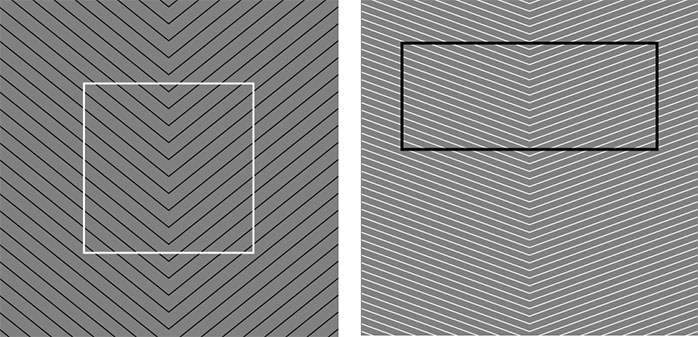The Orbison illusion is an example of an illusion in which the context causes a geometric figure's actual shape to appear distorted. When the figure is overlaid on a field of crossing lines, its shape seems warped. The Orbison illusion is named after psychologist William Orbison, who initially reported his findings in a 1939 article. The Orbison figures typically feature a figure overlaid on a background of radial or concentric lines. Because of the background image, the figure looks distorted; squares bulge, and circles frequently look elliptical. The Orbison illusion falls in the same class of illusions as Hering's illusion.

Figure 4.7.a
Source: Jinal Shah
Currently, it is still unclear how this illusion takes place. Orbison originally proposed that these illusions were caused by fields of force formed during the perception of the background patterns. Any line that crossed these fields would experience a predictable distortion afterwards. However, according to recent findings, there is little evidence to support this notion. The Orbison illusion will greatly help communication designers understand how the background field interacts with the sides of the objects placed in it, such as in experimental or expressive typography.
Here are some more explorations of the Orbison illusion.

Figure 4.7.b
Source: Jinal Shah

Figure 4.7.c
Source: Jinal Shah

Figure 4.7.d
Source: Jinal Shah

Figure 4.7.e
Source: Jinal Shah

Figure: 4.7.f
Source: Jinal Shah
Please look at the pdf below to learn more about these explorations and the Orbison illusion:
• Orbison Illusion......

